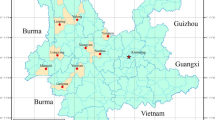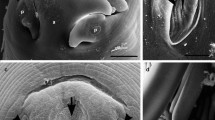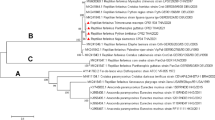Abstract
ROTHSCHILD, in 1911, separated the three species of fleas, X. cheopis, X. astia and X. brasiliensis of the genus Xenopsylla found on rats. X. cheopis is widely distributed in the tropics and is the principal plague flea in India. The three species (♀♀)mentioned here can be easily identified by the shape of the spermatheca. Until now, it has been reported that X. cheopis has a single spermatheca1–3 (Fig. 1).
Similar content being viewed by others

Article PDF
References
Jordan, K., A Handbook for the Identification of Insects of Medical Importance by Smart, J. (printed by order of the Trustees of the British Museum, 1956).
Pollitzer, R., Plague. World Health Organization, Monograph Series No. 22 (World Health Organization, Palais des Nations, Geneva, 1954).
Roy, D. N., and Brown, A. W. A., Entomology (Medical and Veterinary) (Excelsior Press, Calcutta 12, 1954).
Author information
Authors and Affiliations
Rights and permissions
About this article
Cite this article
SHARMA, M., JOSHI, G. An Abnormal Form of Female Rat Flea, Xenopsylla Cheopis Roths.. Nature 191, 727 (1961). https://doi.org/10.1038/191727a0
Issue Date:
DOI: https://doi.org/10.1038/191727a0
This article is cited by
-
Double and Single Spermathecæ in Fleas (Siphonaptera)
Nature (1961)
Comments
By submitting a comment you agree to abide by our Terms and Community Guidelines. If you find something abusive or that does not comply with our terms or guidelines please flag it as inappropriate.


